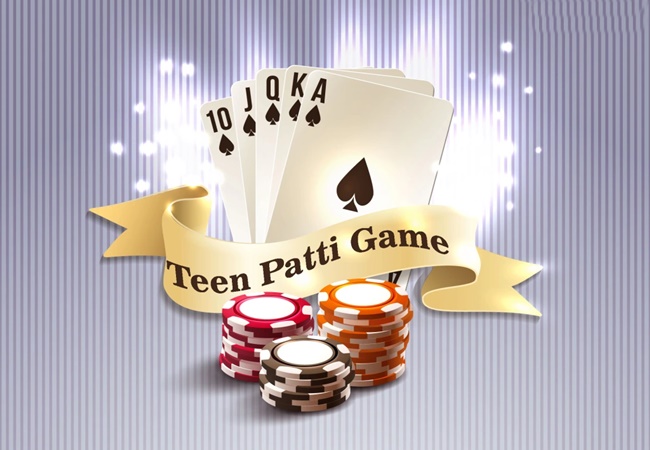
Teen Patti, also known as Indian Poker, is a traditional card game that has captivated millions of players across India and the Indian subcontinent. Derived from the English game of three-card brag, Teen Patti has evolved into a distinct cultural phenomenon, deeply embedded in the social fabric of Indian society. Played with a standard 52-card deck, Teen Patti requires strategic thinking, a bit of luck, and a keen understanding of psychology to master.
The Basics of Teen Patti
The name “Teen Patti” translates to “three cards” in English, reflecting the core mechanics of the game where each player is dealt three cards. The game can be played with a minimum of three and a maximum of six players. The primary objective is to have the best three-card hand and maximize the pot before the showdown.
Players begin by placing a predetermined bet into the pot. The dealer then distributes three cards face down to each player. The game proceeds in a clockwise direction, with each player having the option to either bet or fold. The betting continues until all players either fold or call the maximum bet. The player with the best hand, according to traditional hand rankings, wins the pot.
Hand Rankings in Teen Patti
The hand rankings in Teen Patti are similar to those in poker but simplified for the three-card format. The rankings from highest to lowest are:
- Trail (Three of a Kind): Three cards of the same rank.
- Pure Sequence (Straight Flush): Three consecutive cards of the same suit.
- Sequence (Straight): Three consecutive cards of different suits.
- Color (Flush): Three cards of the same suit, not in sequence.
- Pair: Two cards of the same rank.
- High Card: The highest card in hand if no other combination is achieved.
Variations of Teen Patti
Teen Patti’s popularity has given rise to numerous variations, each adding a unique twist to the traditional format. Some of the popular variations include:
- Muflis: In this variation, the hand rankings are reversed, meaning the lowest hand wins.
- AK47: Here, all Aces, Kings, Fours, and Sevens act as jokers and can substitute for any card.
- Joker: Players are dealt two face-down cards and one face-up joker, which can be used to represent any card.
These variations keep the game fresh and engaging, allowing players to explore different strategies and styles of play.
Online Teen Patti
With the advent of technology, Teen Patti has made a successful transition to the online realm. Numerous online platforms and mobile apps offer Teen Patti games, enabling players to enjoy their favorite card game anytime, anywhere. Online Teen Patti comes with various features like live dealers, multiplayer modes, and tournaments, providing a realistic and immersive gaming experience.
Online platforms have also introduced innovative variations and formats, such as quick-play versions and themed rooms, catering to the preferences of a diverse player base. The convenience and accessibility of online Teen Patti have significantly contributed to its growing popularity among younger generations.
Social and Cultural Significance
Teen Patti is more than just a card game; it holds significant cultural and social value in India. The game is a staple during festive seasons, especially Diwali, where families and friends gather to play and celebrate. It serves as a bonding activity, fostering camaraderie and creating cherished memories.
Moreover, Teen Patti’s influence extends beyond casual gatherings. The game has found its way into popular culture, with numerous references in movies, television shows, and literature. Its widespread appeal has made it an integral part of Indian entertainment.
Psychological Aspects of Teen Patti
Teen Patti is a game of skill and psychology as much as it is of luck. Successful players often exhibit strong observational skills, the ability to read opponents, and strategic thinking. Bluffing is a crucial element in Teen Patti, where players attempt to mislead their opponents about the strength of their hands.
Understanding the psychological aspects of the game can provide a significant edge. Recognizing betting patterns, identifying tells, and maintaining a calm demeanor are essential skills for mastering Teen Patti. The game challenges players to make calculated decisions under pressure, testing their mental fortitude and strategic acumen.
Economic Impact
The popularity of Teen Patti has also had an economic impact. The game contributes to the gaming industry’s growth, both offline and online. Festive seasons see a surge in sales of card decks, and online platforms generate substantial revenue through in-app purchases and advertisements.
Teen Patti tournaments, both local and online, offer significant prize pools, attracting a competitive player base. The game has also created opportunities for content creators, influencers, and professional players, further driving its economic significance.
Responsible Gaming
While Teen Patti is an enjoyable and engaging game, it is essential to approach it with a sense of responsibility. The excitement and thrill can sometimes lead to excessive gambling, resulting in financial and emotional stress. Players should set limits, avoid chasing losses, and prioritize entertainment over monetary gains.
Online platforms promote responsible gaming by providing features like self-exclusion, betting limits, and reality checks. It is crucial for players to be aware of these tools and use them to ensure a healthy and balanced gaming experience.
Conclusion
Teen Patti remains one of India’s most beloved card games, blending tradition, strategy, and entertainment. It’s simple rules, combined with the depth of strategy involved, make it an appealing choice for players of all ages. Whether played at festive gatherings or online platforms, Teen Patti continues to bring people together, offering moments of joy, excitement, and camaraderie.
The game’s enduring popularity is a testament to its cultural significance and the universal appeal of card games. As Teen Patti continues to evolve and adapt to modern trends, it will undoubtedly remain a cherished part of Indian culture for generations to come.
